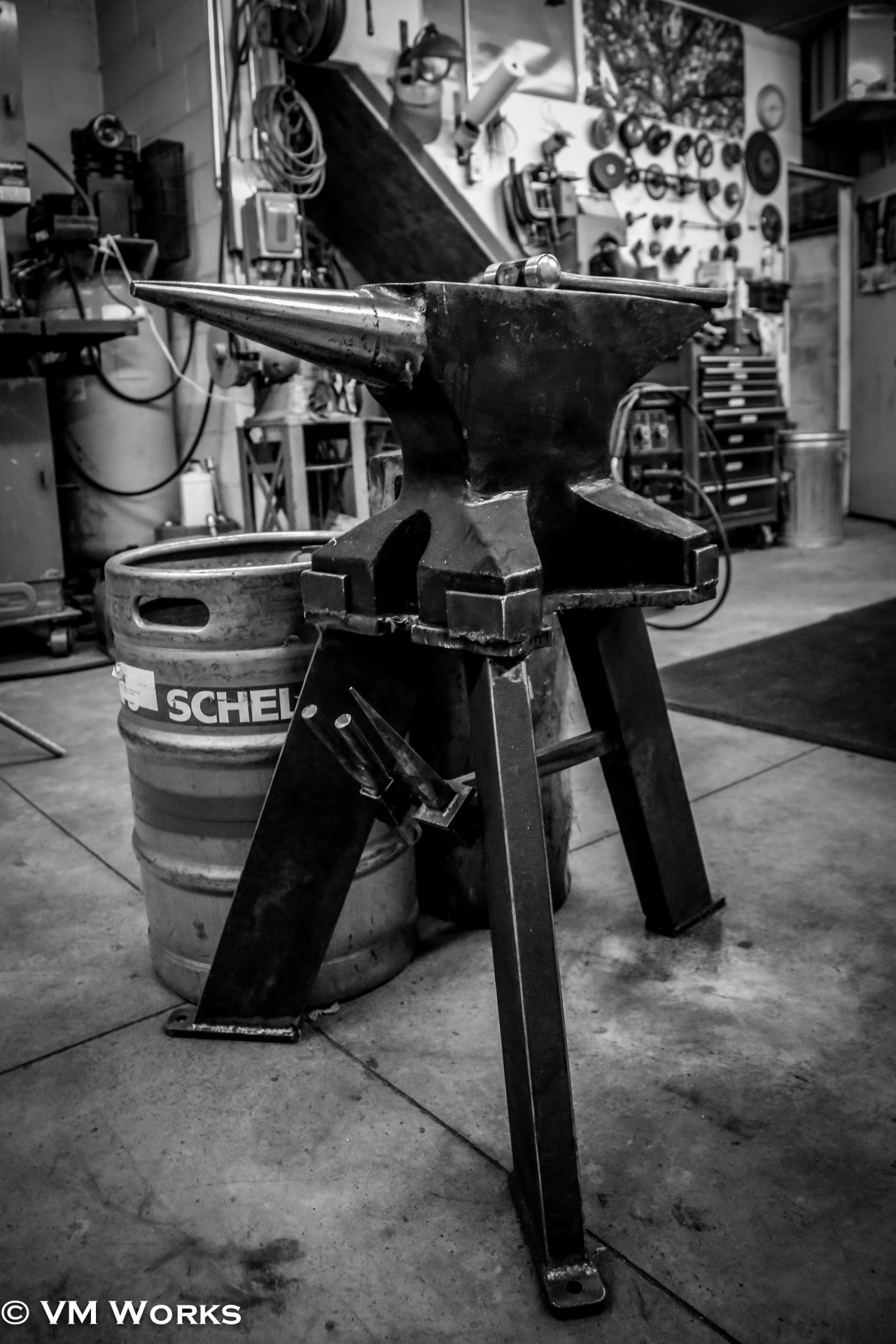
It is fortunate that opportunities exist for people to learn this skill so that one of the longest-established crafts known to civilized man will continue to survive the test of time.

In North Carolina, a blacksmith has begun a course at a local community college. The smith responsible for beginning these programs has personally taken blacksmithing classes in Massachusetts, Maine and two classes in New York City. In the Adirondacks of New York, blacksmithing is being taught in summer camps as well as schools in the area. A quote from the co-president of the organization sums it up: “People’s interest in the association is they are interested in seeing how people did things back in the days when they actually did things.” The Western Maine Blacksmith Association has put together a traveling forge to share this bygone-day art with more people. Today’s interest in blacksmithing can be seen in a variety of ways. The anvil can be quite expensive, and every part of it – the face, horn, square and circular holes – serves a unique purpose. A securely mounted leg vise complements the anvil. The key tools of a smith are still the anvil, tongs and a hammer. The steel is usually heated to around 2000☏. In either case, the forge is heated to temperatures of 2000-3000☏ using coke and a blower or bellows to concentrate the air. Some of today’s blacksmiths have more sophisticated equipment, but many have chosen to do it the old-fashioned way. The uniqueness of the goods produced by today’s blacksmiths is what attracts buyers. Most blacksmiths are drawn to the art of the trade versus its utility. The flair seen in today’s art is, at least in part, due to the early work of this smith. A Frenchman named Jean Tijou introduced the art of decorative blacksmithing in the late 17th century. In the 16th century, cast iron came into greater use. Other surnames such as Miller and Cooper have similar origins. The number of folks with the last name of “Smith” demonstrates the prevalence of the vocation. The farrier was a specialist in the making and fitting of horseshoes, while the chainsmiths and nailsmiths had their specialties. The whitesmith was someone who worked with lead, and the blacksmith was the ironworker. The smith began to specialize in the Middle Ages, especially with the onset of the Industrial Revolution.

They found that wood converted to charcoal produced a better fire – the intensity of which could be increased with an air blast. The smith can also be found in the classical mythology of the Romans, Greeks, Phoenicians and Aztecs.Įarly smiths likely heated iron in wood fires. This early Iron Age occurred about 800-500 B.C. When the Hittites were scattered, their ironworking skills were spread to Greece and the Balkans. The Hittites likely invented forging and tempering, and they kept their ironworking techniques secret. Although in Egypt, it was likely the product of a Hittite tradesman. The first evidence of smithing by hammering iron into shape is a dagger found in Egypt dating to 1350 B.C. Many of today’s blacksmiths work with the tools and techniques utilized for many centuries. This field is experiencing a bit of a resurgence as people look for a craft with an artistic component that can provide a usable product for those who are looking for something out of the ordinary.

The forge blower is the Centaur Forge, # PB50VS, (and is one of the few blowers I’ve used that is I feel is satisfactory for the kind of forging I do.ĭick and 250 lb.Who has a more personal connection to high-temperature metals processing than the blacksmith?ĭo you think blacksmiths no longer exist? Think again. The firepot is a Centaur Vulcan which I have to replace every few years (I will get a thicker firepot next time I redo my forge). The top of the firepot and the floor of the chimney are flush with the table top. The forge table is 1/8 inch aluminum diamond plate and gets darned hot to the touch when in use (next time I’ll cover it with brick like the student forges. of smoke inlet opening (1 1/2 X area of chimney flue opening). The inlet opening is arch topped and is 18” high. The chimney smoke inlet tapers from 15” wide (next to the firepot) to 11” wide at the chimney side of the brick (6” away from the fire pot). clay flu liner, and works so well that very seldom is there smoke in the room. The forge chimney is double wall brick,, 34 ft. The trip hammer is one of 2 rebuilt 50 pound Little Giants. It has one flat topped and tapered horn, a side shelf, an upsetting block, and a feathered transition from the main face to the round horn (no drop). It is soft at RC52, therefore it has been replaced with a Ernst Refflinghaus anvil of 150 kg or 330 lb. The anvil is a German made August Refflinghaus Anvil style #58. Alternative Methods (+ 3% Fee) The Blacksmith & Shop


 0 kommentar(er)
0 kommentar(er)
